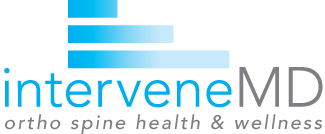Prolotherapy
Treatment Overview
Prolotherapy
We provide this information to help you. If you have a specific question and don’t see an answer here, please don’t hesitate to contact us. We welcome the opportunity to develop your personalized treatment plan to get you back in action!
Seeing us for the first time? Please complete our New Patient Pre-Visit Questionnaire and bring it to your first appointment.
Prolotherapy can help bones stay in proper alignment.
Prolotherapy is an injection technique that originated in the late 1930’s and is used to treat these structural dysfunctions.
Prolotherapy can be a valuable tool to treat pain (and avoid surgery) due to many common conditions such as a bulging disc, a labral tear in the hip or shoulder, a rotator cuff tear, or a meniscus tear in the knee.
With proper patient selection and strong communication with treating chiropractors and physical therapists, there’s an 80-85% chance that prolotherapy will reduce pain and increase function at least 50%.
The importance of bones and ligaments in our bodies is undeniable.
The American Association of Orthopaedic Medicine describes ligaments as cable-like structures, which hold our bones together and allow us to walk without falling apart. Ligaments are flexible, but they do not stretch very far. Injuries, such as when you sprain a ligament, twist a knee, take a bad fall, suffer whiplash, or lift an object which is too heavy, can tear or fray these structures.
When a ligament is sprained or injured, some strands or threads that make up the cable become over-stretched and broken which allow the joint to move beyond its normal range of motion. This abnormal motion can produce painful sensations and numbness and tingling. In the spine, too much slippage can cause the backbones to press on the spinal nerves and cause sciatica. The body responds to this motion by making muscles contract in an effort to pull the joint back to the correct location. Prolonged muscle contraction then leads to muscle spasms. The tendency is to treat the muscle spasm and overlook the primary reason – ligament laxity.

